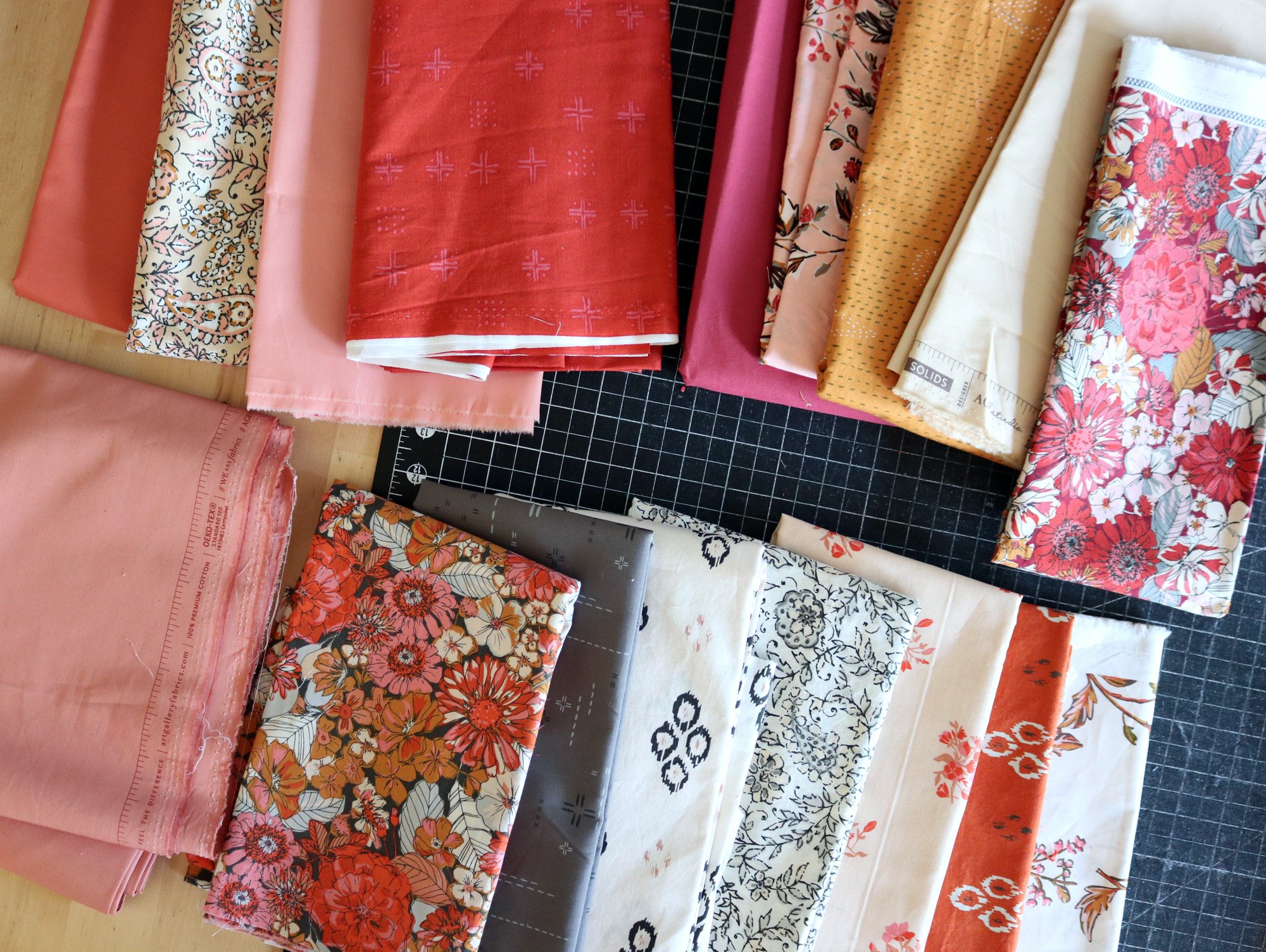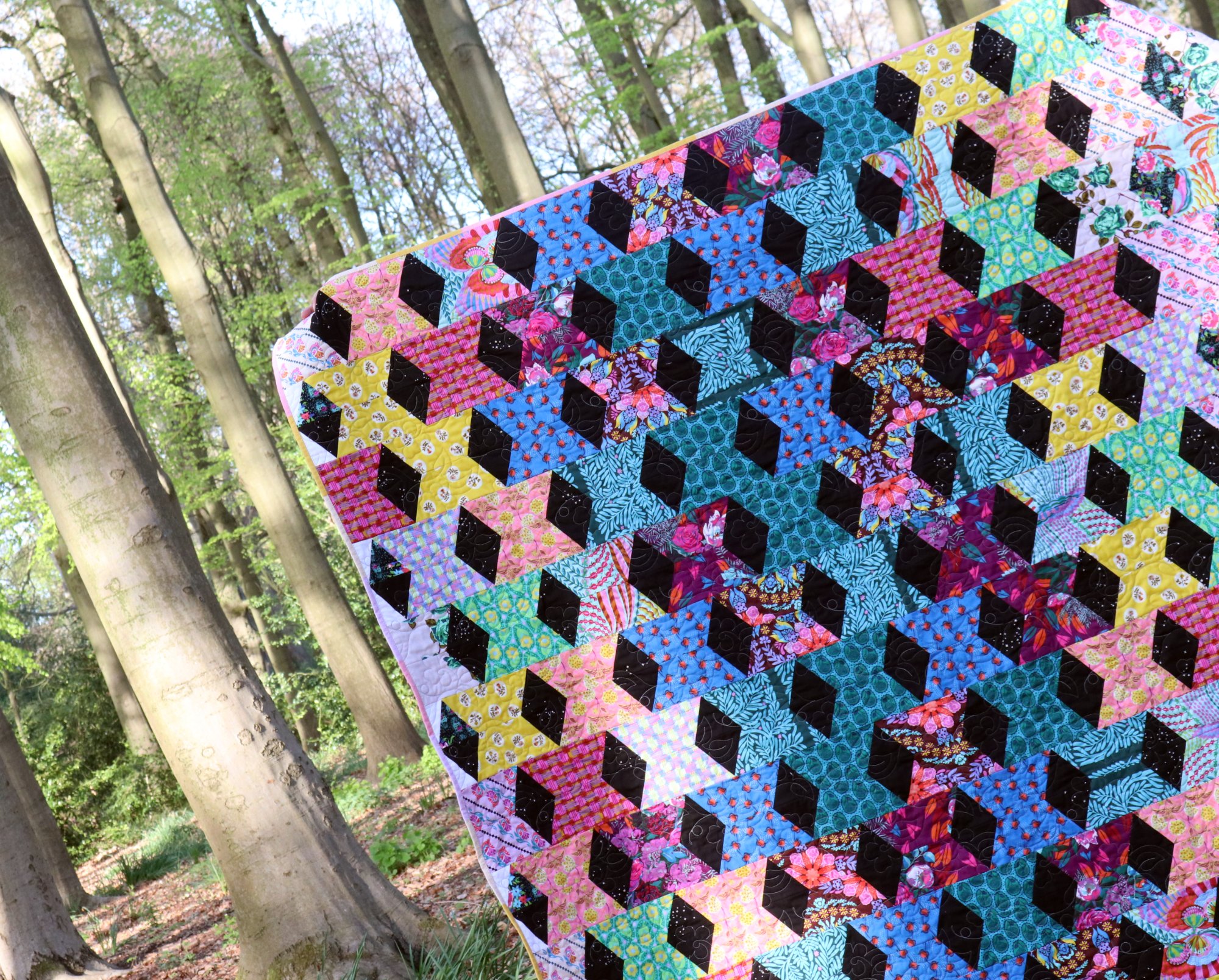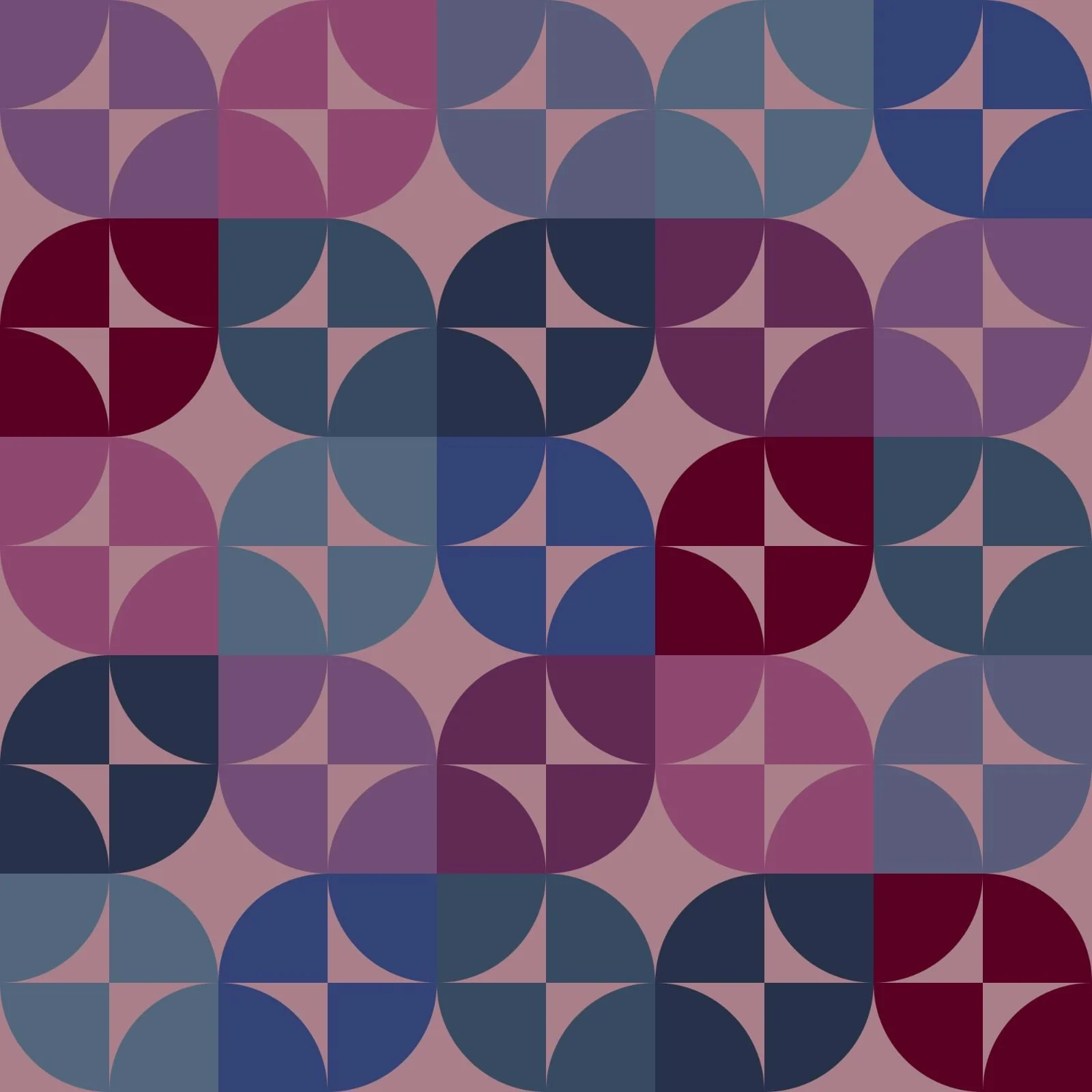Orange Peel slices
I always love starting a new quilt, but this time is extra special because this quilt is for me! It’s destined to live in the living room where everyone is welcome to use it, but the colors and style are 100% perfectly delightful to yours truly. That is a joy, my friends!
Ok, let’s begin.
I’ll be sewing a traditional quilt block called orange peel. However, I won’t be using a traditional layout. I have to get my hands on the shapes and colors in order to design this quilt in real life, so my first step is to start cutting. I divided my fabrics into three camps.
Art Gallery Pure Solid in Cinnamon (bottom, left). This will be my main background color. I’ll cut more backgrounds than this in anything else, and also cut some orange slices in the hue.
Main Fabrics (top row) - for both backgrounds and orange peel slices.
Accent Fabrics (bottom row, right) - for orange peel slices only
Some of these designations might change, but this allows me to get started without feeling like I’m totally cutting in the dark!
So lovely! What a pleasure to be working with Kismet fabrics again. The solids are Vanilla Custard, Weathered Brick, Mauvelous, Blossomed, Terracota Tile and Cinnamon (available at Fat Quarter Shop). The Kismet collection is hard to find these days. One of my sponsor stores is working on getting it back in stock. We can even create quilt kits for anyone who wants to recreate my Kismet orange peel quilt during our October/November sew-along. Be thinking about that, because I’ll call for a count of those interested on Wednesday. =)
After cutting comes the challenge. How to bring my fuzzy inner vision of this quilt to life? So begins the design wall dance - - -
Orange peel blocks are often grouped in quartets to form a flower shape or a circular shape. A quartet doesn’t have to be made with exact duplicate blocks. I love a checkerboard background layout in my quartets, for example. I also use value to unite quartets, even when fabrics vary.
I want to play with both flower and round shapes with my quilt, as well as an upward-growing leafy vine layout.
To keep things flowing and interacting, I also allow broken quartets.
It’s really a pleasure to design!
I can sense that this quilt pattern is going to be a challenge to write. The design is far more dynamic than most quilt patterns, but I have some ideas on how to simplify it for replication. I enjoy that part of the process too - figuring out how to communicate quilt patterns in a succinct and yet reproducible way. So, I’ll forge ahead. Back Wednesday with an update and the first sign up call for our fall sew-along!






